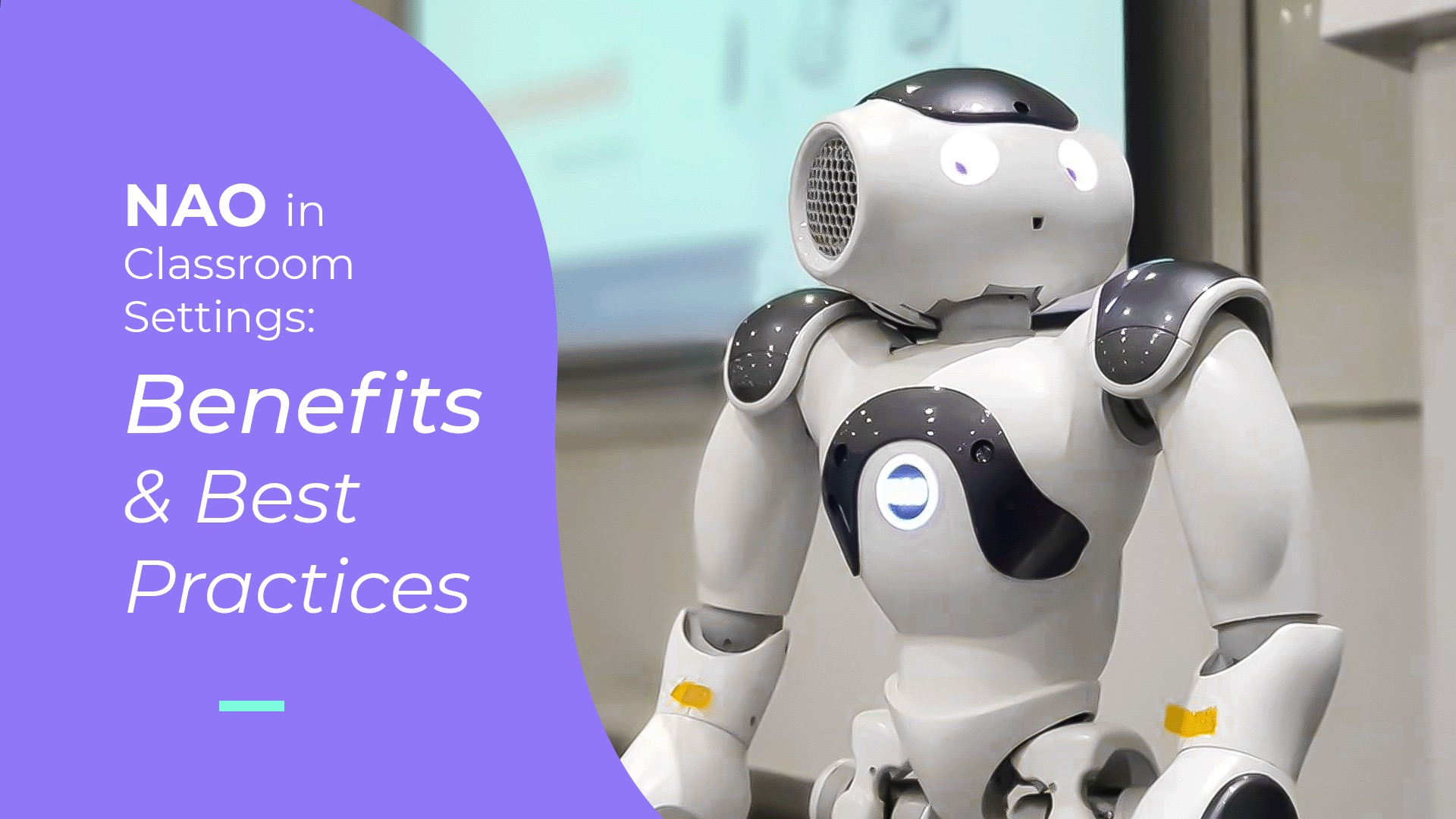Technology has drastically changed the way we learn and teach. One such technology that has revolutionized classroom settings is the introduction of humanoid robots in education. Among these robots, NAO, developed by Softbank Robotics, has gained popularity among educators worldwide.
In this article, we delve into the awe-inspiring capabilities of the NAO robot and explore its transformative impact on both technical education and the emotional well-being of students. Join us as we embark on an enlightening journey through the cutting-edge realms of educational robotics and discover how the NAO robot is reshaping the future of learning.
What’s included?
- Why NAO educational robot is an EdTech breakthrough
- Benefits of humanoid robots in education, focusing on NAO
- Best practices for integrating NAO into the curriculum
- What does the future look like?
NAO educational robot: An innovative EdTech breakthrough
Amidst the multitude of EdTech tools that have graced the educational landscape, few have captivated our attention like the remarkable NAO robot. This humanoid marvel stands as a testament to the potential of robotics in revolutionizing classroom dynamics, offering students a profound experience in understanding coding, social-emotional skills, and the intricacies of robotic behavior.
However, the significance of the NAO robot extends beyond its technical prowess. For students with diverse learning needs, particularly in special education and those on the autism spectrum, the NAO robot has proven to be an invaluable resource, fostering a sense of tranquility and comfort in their interactions with this advanced technology. In our pursuit of empowering educators with the latest teaching tools, we will examine the benefits of using NAO in classroom settings with the best practices for harnessing the educational potential of this robot.
Benefits of humanoid robots in education, focusing on NAO
Humanoid robots exhibit distinct human-like characteristics in both form and behavior. Incorporating a human-like form has demonstrated its ability to establish a profound connection with students, fostering a sense of ownership and engagement. Remarkably, “learning by teaching” and caregiving educational styles have proven particularly effective in leveraging this connection to enhance the learning experience. NAO also has the same characteristics that can benefit teachers and students alike. Here are some of them:
- Enhanced learning experience: NAO provides an interactive and engaging learning experience that can help students better understand complex topics. With its natural language processing ability, NAO can communicate and interact with students, making the learning process more effective.
- Facilitate individualized learning: NAO is programmed to detect and respond to emotions. This capability enables it to provide personalized education to students based on their learning styles and emotional needs. This individualized approach enhances the learning experience and improves comprehension.
- Developing social and emotional skills: Interacting with NAO can help students improve their social and emotional skills, like empathy and emotional regulation. They can practice communication, collaboration, and conflict resolution in a low-stakes environment, preparing them for real-world experiences.
- Improved classroom management: NAO can help teachers manage classrooms by serving as an additional resource. It can deliver lesson plans, take attendance, and support students struggling with a particular topic. This support can free up time for the teaching staff and enable them to focus on improving other aspects of classroom management.
- Enhanced accessibility: NAO can support students with disabilities by providing visual and auditory aids, facilitating communication with the teacher, and providing individualized feedback.
Best practices for integrating NAO into the curriculum
While NAO provides several benefits, it is essential to integrate this technology into the curriculum effectively. Here are some best practices for using NAO in classroom settings:
- Define clear learning objectives: Start by defining clear learning objectives that align with the curriculum. This will help educators identify how NAO can support student learning and provide a precise point of reference for assessing the success of the integration.
- Upskill teachers before deploying: Just as students need to learn how to use technology, so do teachers. Educators need to be trained on how to use NAO to teach effectively with it. Additionally, students need to understand how to interact with NAO and how it can support their learning process.
- Integrate NAO into existing curriculum: Integrate NAO seamlessly into existing curriculum and lesson plans. Avoid using NAO as a standalone tool separate from the curriculum.
- Complement NAO with other resources: NAO is an excellent supplementary tool but should be one of many tools used in the classroom. Use NAO alongside other resources like textbooks and digital resources to provide students with a well-rounded learning experience.
- Monitor performance: Regularly monitor and evaluate NAO’s performance to ensure it delivers on the learning objectives. Use performance data to adjust and improve the use of NAO to support student learning better.
- Maintain NAO: Finally, ensure that NAO is well-maintained and in optimal working condition at all times. Charge its battery, update its software, and troubleshoot any issues comprehensively.
In conclusion
Integrating NAO into classroom settings provides a myriad of benefits for both teachers and students as it delivers an interactive and engaging learning experience personalized to each student’s style and emotional needs. The robot also improves classroom management and accessibility for students with disabilities. However, to integrate NAO effectively, you must train teachers and students, define precise learning objectives, integrate it seamlessly into the existing curriculum, supplement it with other resources, monitor its performance, and maintain it optimally. These best practices can create a conducive learning environment for students and enable teachers to deliver personalized and practical instruction.
Want to hire NAO for your educational setup? Contact the PROVEN Robotics team today.




